Sex in Pompeii: this is the subject of a major exhibition that, from April 21, 2022 to January 15, 2023, shows us how ancient Pompeians did it. It is Art and Sensuality in the Houses of Pompeii, set up in the Palestra Grande of Pompeii’s archaeological excavations. Amazement, curiosity, and embarrassment are indeed some of the feelings archaeologists and visitors have experienced when confronted with paintings and sculptures from Pompeii and other Vesuvian sites since the first discoveries in the 18th century. As the excavations progressed, it became increasingly evident that images with sensual and erotic content, often far removed from a classicist view of the ancient world, characterized virtually every space in the city, from private homes to baths, from obscure taverns and dive bars, to the public spaces of the community. Among the latest discoveries, which attracted much interest, were the house of Leda and the swan and the ceremonial chariot with erotic decorations from Civita Giuliana.
With a very diverse audience from all over the world returning to Pompeii in recent months, the question of how to explain the omnipresence of sensuality in Pompeii’s imagery is more topical than ever, according to the institute. And it is therefore this defined “didactic” need that provided the impetus for the exhibition. Curated by the park’s director, Gabriel Zuchtriegel, and archaeologist Maria Luisa Catoni, a professor at IMT Alti Studi Lucca, the exhibition aims to be a “key to interpretation” that helps the public better understand what is seen at the site.
In fact, the exhibition project includes, in addition to the display at the Palestra grande, an itinerary to discover various buildings on the site characterized by frescoes and references to the theme, which can be reached with the support of the My Pompeii App, which includes a dedicated section. Among the seventy works on display, all from the storerooms of the Pompeii Archaeological Park, are also the two bronze medallions with erotic scenes from the ceremonial chariot from Civita Giuliana and the exquisite ceiling of the cubiculum (bedroom) found in collapse on the floor, later reassembled and restored, of the House of Leda and the Swan, as well as the 3 walls of the cubicle of the Villa of Gragnano in the Carmiano locality, reconstructed after recent restoration.
In this way, the exhibition also aims to enhance the recent discoveries as part of the Great Pompeii Project. The central core of the exhibition also hosts works from Oplontis - Hermaphrodite and Satyr and two pairs of Centaurs - in a set-up-installation that seeks to reconstruct the experiential, almost cinematic dimension evoking the ancient context and imagery. In addition, a children’s guidebook, The Centaurs of Pompeii signed by the director with drawings by Daniela Pergreffi, aims to explain a “difficult” subject to young children, following in the footsteps of the centaur Mares in search of a centauress. In addition to enjoying the exhibition tour, along the story, young and old readers alike will meet a number of central figures of ancient myth, from Narcissus to Dionysus and Ariadne. The exhibition is sponsored by American Express and Hotel Caruso A Belmond, Hotel Amalfi Coast in Ravello.
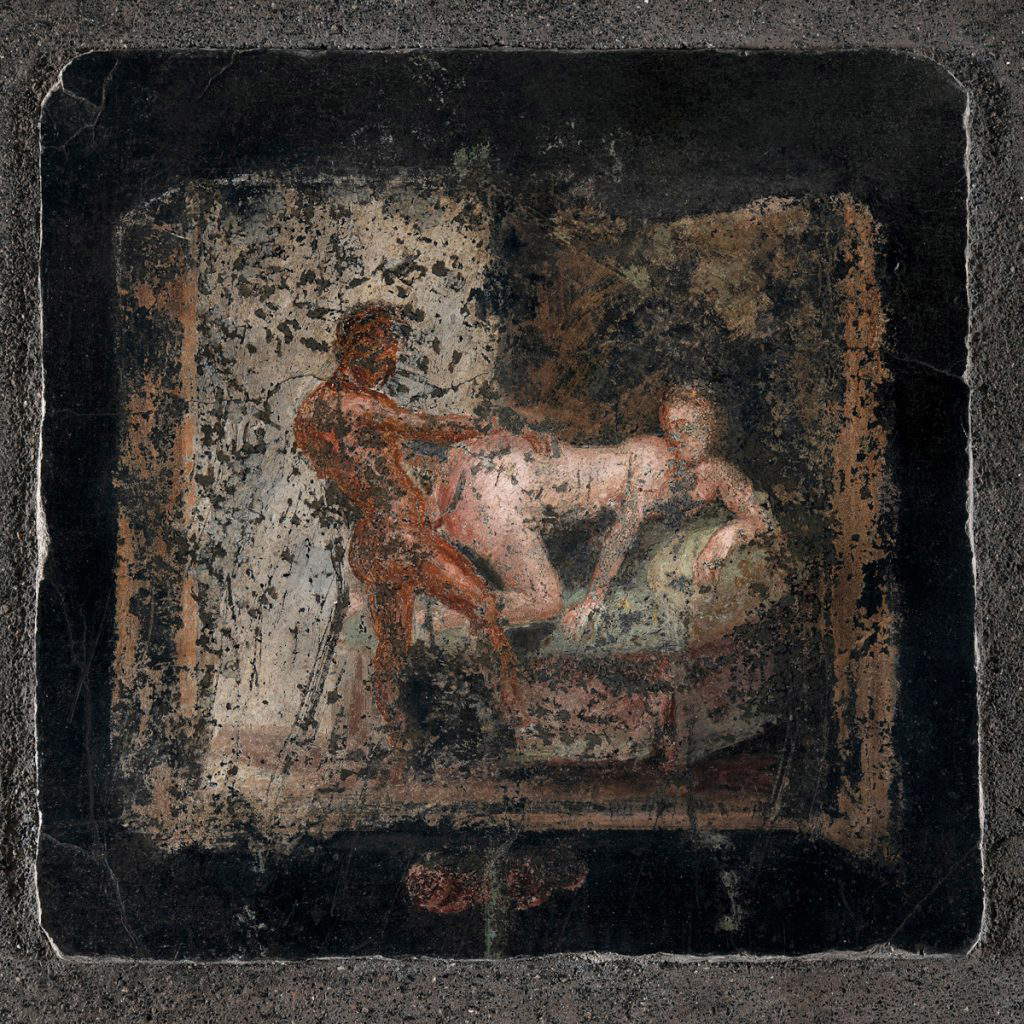
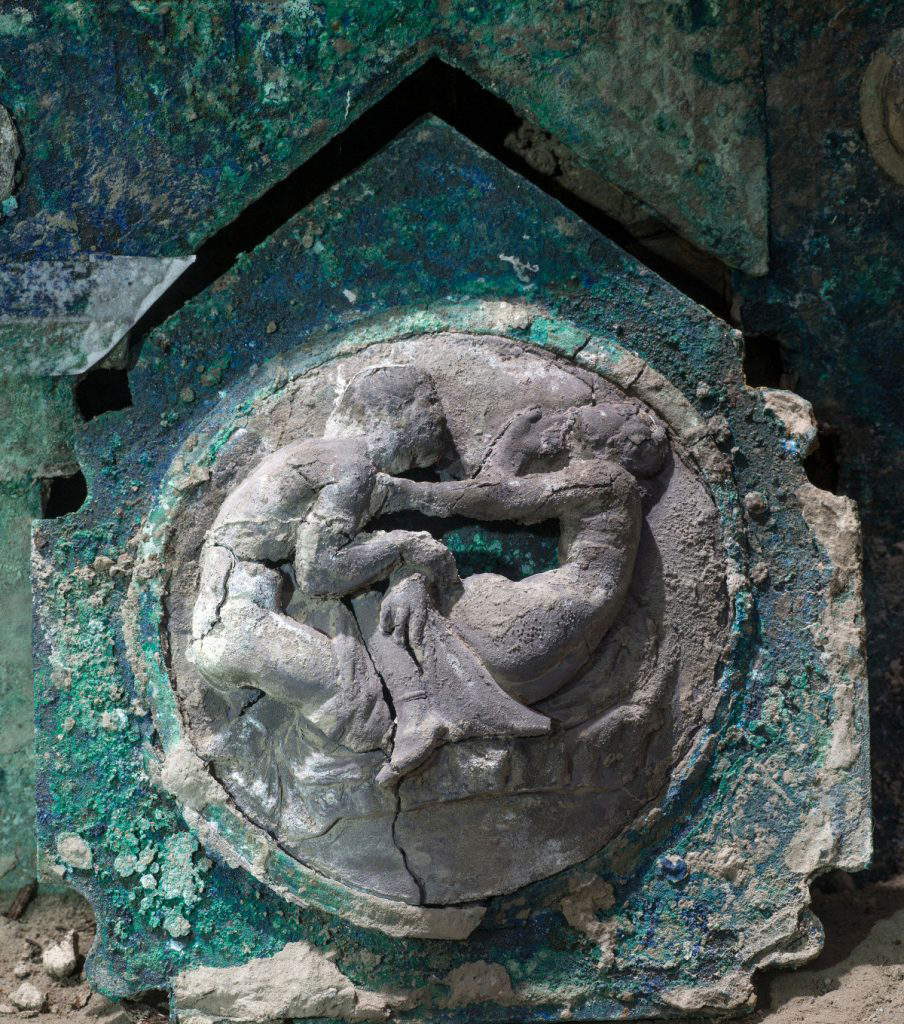
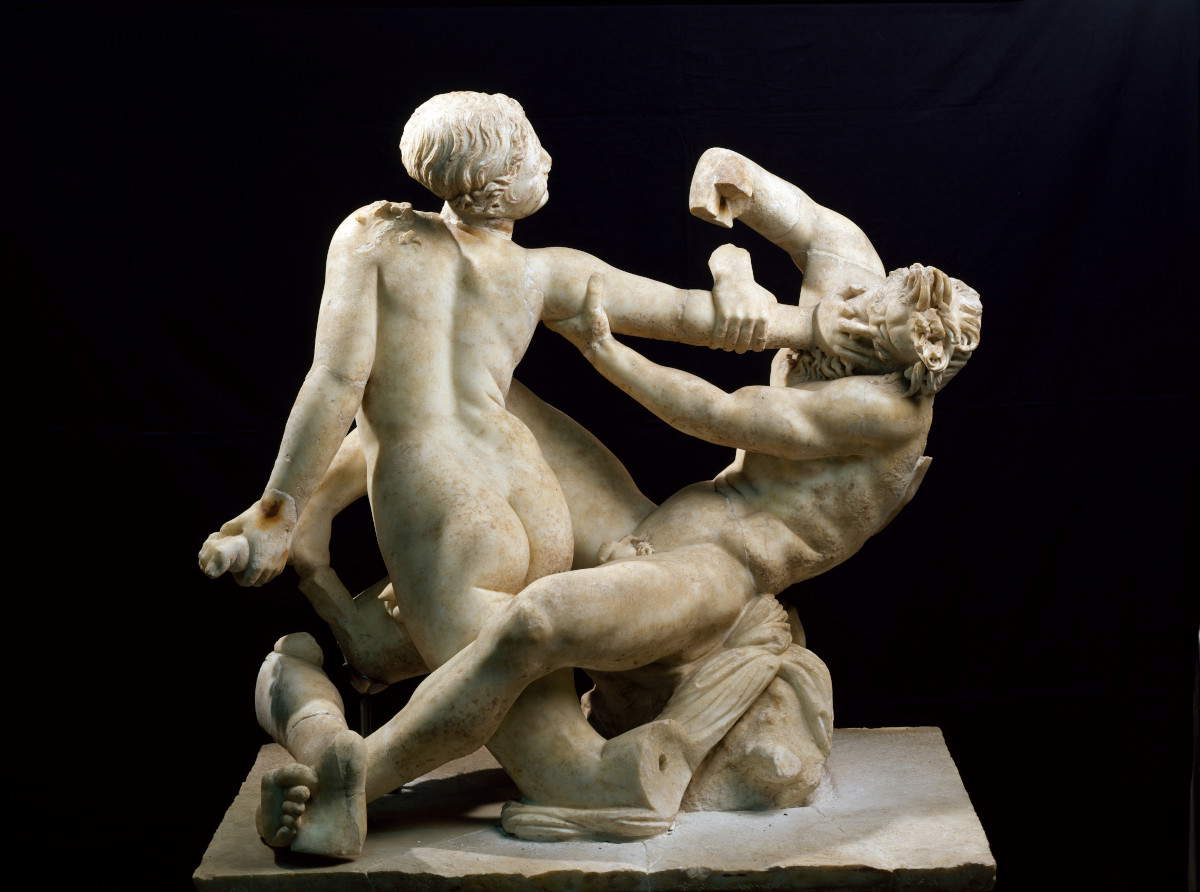
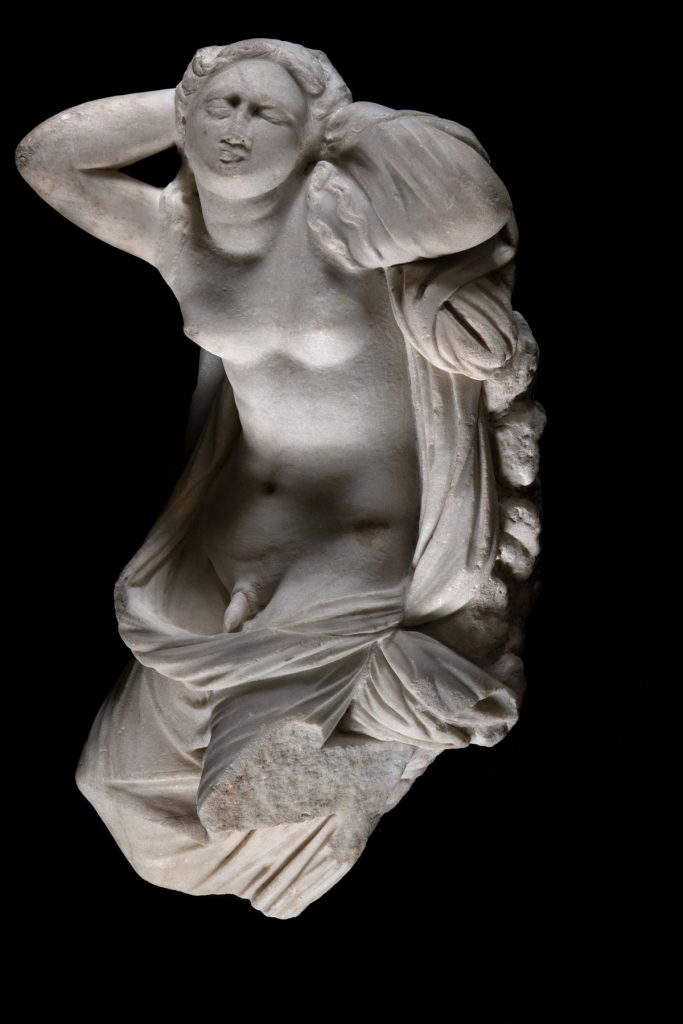

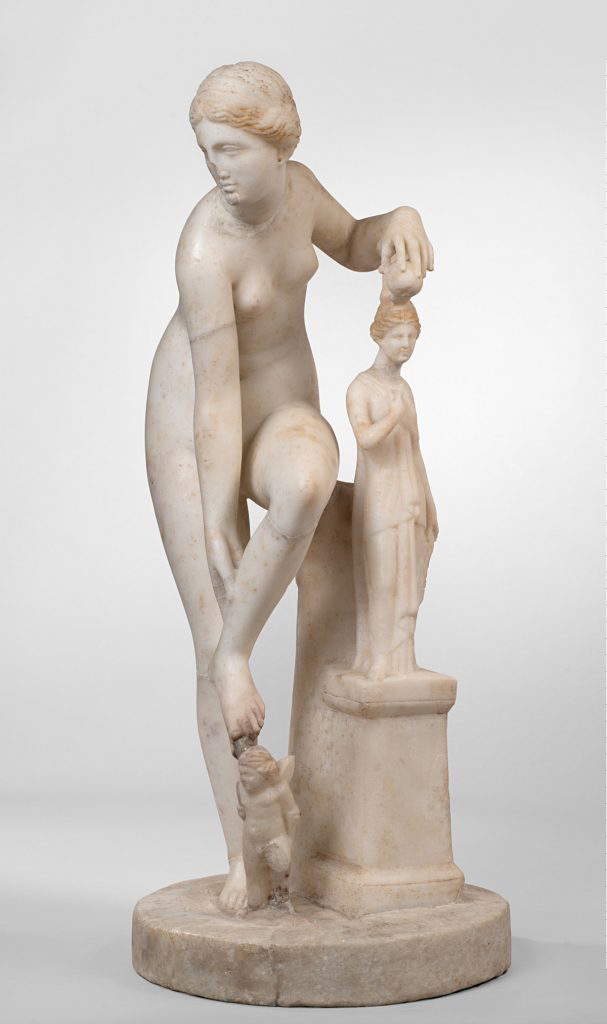
“In these times of pandemic emergency and war, the exhibition wants to be a hymn to the resilience of beauty,” says Pompeii Archaeological Park Director Gabriel Zuchtriegel, “but it wants to be so from a historical perspective, which helps us understand that even in the past art and imagination were intertwined with social, cultural and political relationships and hierarchies. That today we can admire in Pompeii an ancient city with frescoes, statues and furnishings found in the position where they were buried during the eruption of 79 A.D. is a wonderful gift of history that we must preserve and pass on to future generations. The exhibition, which is almost a kind of introduction to the visit of the site, wants to contribute to this by also enhancing many works in storage that in some cases have been restored and re-studied for display.”
“This exhibition belongs to the type of research exhibitions, aimed at enhancing yes the property and the site but also the multiple relationships, the collaboration between different research methodologies and the functions of protection and management,” adds Maria Luisa Catoni. “It allows the visitor to establish a physical relationship between what is on display and other objects and places at the site, including some new discoveries that have come to light. Visitors thus enter an exhibition in which they can not only see objects of great interest and beauty but also use them as as many ’pointers’ to different contexts: the context of Pompeii and the archaeological site, the context of the Villas, for example of Stabiae and Oplontis, the context of the exchange between Greek and Roman culture during the 1st century AD, the context of the codification and tradition of erotic and sensual images, the context of the functions and uses of those images in the spaces they decorated, and so on. In few other places in the world is it possible to offer the visitor such a ramified and interactive journey. And in Pompeii this is also possible because of the extraordinary commitment that the site has been pursuing for some years in research and communication of research, as well as in opening up to researchers from all over the world.”
“The goal of an exhibition is to tell, through a common thread, particular aspects of an era, a historical context, or to identify connections between several contexts. But they must arise above all from scientific and multidisciplinary research that can lead the visitor to knowledge of the past,” says Massimo Osanna, Director General of the Museums, “In this case, the exhibition allows us to add to the narrative, an unprecedented piece of the site’s history, the result of recent investigations and discoveries, which for the first time are shown to the public and in a dedicated thematic area. What’s more, they bear the story of a complex work that has involved multiple Park professionals as well as institutions and law enforcement agencies in an activity of common purpose, as in the case of the Civita Giuliana chariot, in anarea plundered by grave robbers; while in other situations, as with the reconstruction of the ceiling found in collapse of the house of Leda and the swan, they are testimony to the very delicate and often little-known work of reassembling the fragments by restorers.”
“As American Express we are particularly proud to be able to support this new exhibition organized by the Pompeii Archaeological Park,” comments Piotr Pogorzelski, Vice President & General Manager, Global Merchant Services, American Express. “We were immediately impressed by the project that we decided to support with enthusiasm and conviction, certain that the enhancement of an estimable artistic and cultural heritage such as that of Pompeii can represent an extraordinary opportunity to give further visibility to our country at the international level, attracting quality tourism.”
Hotel Caruso’s Director Alfonso Pacifico, says, “This initiative in support of our culture is based on the desire to feel an integral part of the enhancement of our country’s artistic heritage, making it available to our guests in a completely new version: an immersion in a past that is still incredibly alive and relevant, an indispensable part of what we are today. Inside the Hotel Caruso itself, in fact, we can still breathe the splendor of the Roman era: in its gardens still visible, with the pride of a glorious era, some ruins of the ancient palace of the patrician Family Camera D’Afflitto, most likely belonging to a bath of Arab influence. It returns and repeats this connection with history that inexorably links incredibly close realities.”
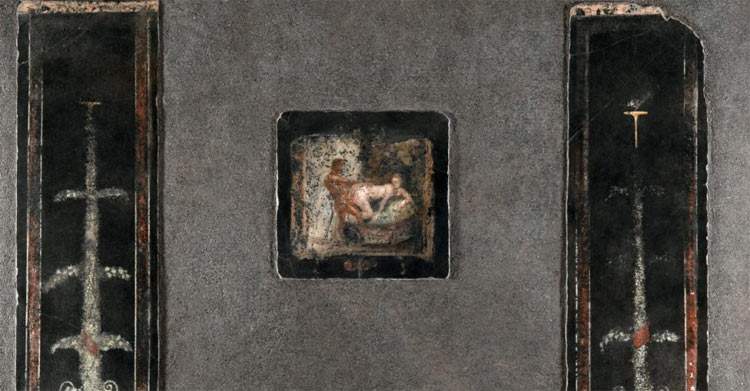 |
| Sex in Pompeii: a major exhibition shows how Pompeians did it |
Warning: the translation into English of the original Italian article was created using automatic tools. We undertake to review all articles, but we do not guarantee the total absence of inaccuracies in the translation due to the program. You can find the original by clicking on the ITA button. If you find any mistake,please contact us.